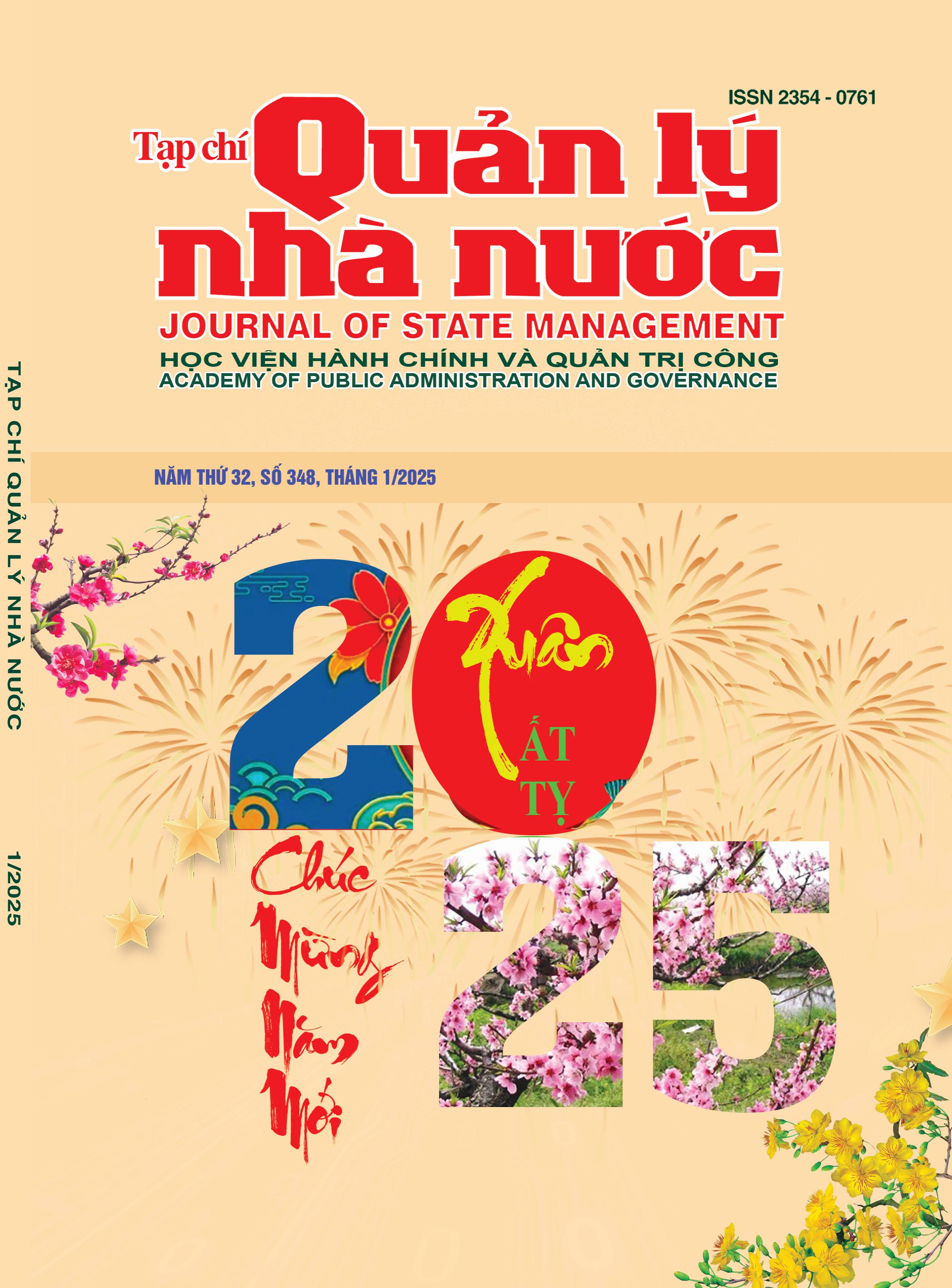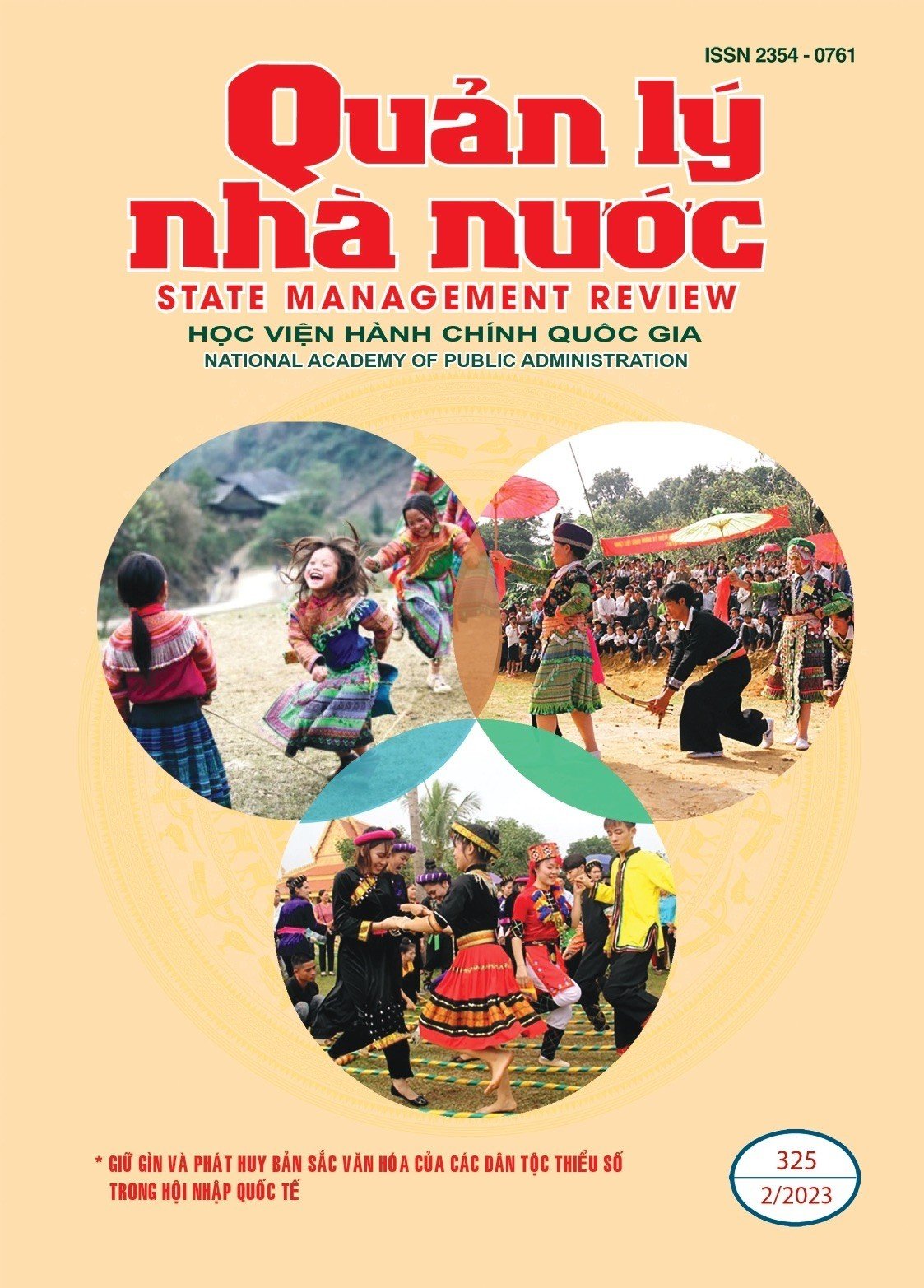Bảo hộ quyền tác giả với tác phẩm tạo ra từ trí tuệ nhân tạo
DOI:
https://doi.org/10.59394/qlnn.348.2025.1072Từ khóa:
Trí tuệ nhân tạo, tác phẩm, quyền tác giả, bảo hộTóm tắt
Tác phẩm tạo ra từ trí tuệ nhân tạo rất đa dạng, nhưng pháp luật của hầu hết các quốc gia không bảo hộ quyền tác giả cho các tác phẩm này. Đây là một vấn đề pháp lý đang được tranh luận mạnh mẽ hiện nay. Bài viết sử dụng các phương pháp phân tích, so sánh luật học, tổng hợp để tìm câu trả lời cho ba câu hỏi: (1) Tại sao pháp luật hiện hành không bảo hộ tác phẩm tạo ra từ trí tuệ nhân tạo? (2) Tại sao cần bảo hộ cho các tác phẩm này? (3) Cần thay đổi cách tiếp cận như thế nào để thúc đẩy trí tuệ nhân tạo sáng tạo ra tác phẩm? Từ đó, đưa ra một số khuyến nghị sửa đổi pháp luật Việt Nam nhằm thích ứng với sự phát triển nhanh chóng của trí tuệ nhân tạo.
Tài liệu tham khảo
Moumita G., Thirugnanam A. “Introduction to Artificial Intelligence”, Artificial Intelligence for Information Management: A Healthcare Perspective, Book Series: Studies in Big Data, Volume 88, Springer Publisher 2023, tr. 23.
Bhushan Pandit (2022). “Review of Artificial Intelligent (AI) Work as A Human Brain”, International Journal of Novel Research and Development, Vol 7, Issue 12.
Ignacio Cofone (2018). “Servers and Waiters: What Matters in the Law of AI”, Stanford Technology Law Review 167, 2018, tr. 174 - 179.
Stewart Pringle (2016). “Beyond the Fence: How computers spawned a musical”, NewScientist. https://www.newscientist.com, truy cập ngày 19/9/2022.
“What can AI generate today?”. https://blog.tapptic.com, truy cập ngày 7/6/2024. 6. Ari (2021), “Who is GAN? History of GAN Speed Cube Manufacturer”. https://speedcubeshop.com, truy cập ngày 6/7/2024.
Chloe Olewitz (2016). “A Japanese AI program just wrote a short novel, and it almost won a literary prize, Dogotaltrend”. https://www.digitaltrends.com, truy cập ngày 19/9/2022.
Winston & Baker (1985). “Behavior Analytic Studies of Creativity: A Critical Review”, The Behavior Analyst Vol 8 No.2 (Fall), tr. 200 - 202.
Điều11 Luật Quyền tác giả và Quyền liên quan 1998 của Brazil.
Điều 11 Luật Quyền tác giả của Trung Quốc sửa đổi, bổ sung năm 2010.
Điều 7 Đạo Luật Quyền tác giả của Ấn Độ 1957 sửa đổi, bổ sung mới nhất theo Luật số 27/ 2012.
Mục 32 (1), 32 (4) Đạo luật Quyền tác giả 1968, sửa đổi, bổ sung năm 2024 của Australia.
US Copyright Office, Copyright Registration Guidance: Works containing material generated by Artificial Intelligence, Rederal Registration Vol 88, No 51, 16/3/2023, tr. 16.191.
William W. Fisher (1987). “Theories of Intellectual Property”, New Essays in the Legal and Political Theory of Property, Stephen Munzer ed., Cambridge University Press, 2001, tr. 9.
Sogut Atilla (2024). “Dealing with AI- generated works: the CDPA section 9(3)”, Journal of Intellectual Property Law & Practice, Vol. 19, No.1, tr. 46.
Jiangfeng Hao (2024). “Thinking about the Originality of Artificial Intelligence works in the Perspective of Legal Philosophy”, Philosohy International Journal Vol 5 Issue 2, Medwwin Publishers, tr. 2.
Tạo hình ảnh bằng AI. https://www.vietnamworks.com, truy cập ngày 07/3/2024.
J. Hughes (1988). “The Philosophy of Intellectual Property”, 77 The Georgetown Law Jourrnal 287, tr. 296 - 414; E.E. Hettinger (1989), “Justifying Intellectual Property”, Philosophy and Public Affairs Vol 18, No 1, tr. 36.
Andres Guadamuz (2017). Artificial Intelligence and coyright, WIPO magazine, 10/2017. https://www.wipo.int, truy cập ngày 4/8/2024.
Mục 9 (3) Đạo luật Quyền tác giả. Kiểu dáng công nghiệp và Sáng chế năm 1988 sửa đổi bổ sung 2003 của Anh quy định: “In the case of a literary, dramatic, musical or artistic work which is computer- generated, the author shall be taken to be the person by whom the arrangements neccessary for the creation of the work are undertaken”.
Mục 178 Đạo luật Quyền tác giả. Kiểu dáng công nghiệp và Sáng chế năm 1988 sửa đổi bổ sung 2003 của Anh quy định “computer- generated”, in relation to a work, means that the work is generated by computer in circumstances such that there is no human author of the work”.
Quốc hội (2005). Luật Sở hữu trí tuệ năm 2005.
Quốc hội (2019). Luật số 42/2019/QH14
ngày 14/6/2019 sửa đổi, bổ sung một số điều của Luật Kinh doanh bảo hiểm, Luật Sở hữu trí tuệ.
Quốc hội (2022). Luật số 07/2022/QH15 ngày 16/6/2022 sửa đổi, bổ s ungmột số điều của Luật Sở hữu trí tuệ.






